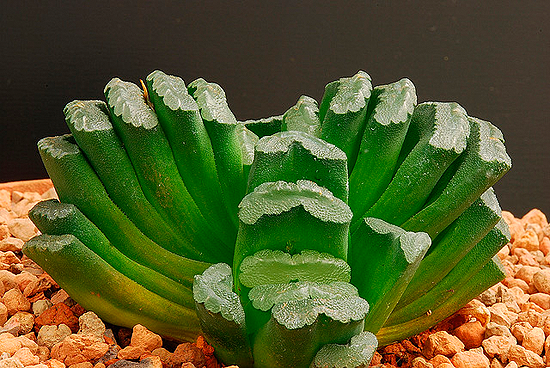3 Varieties Of Succulents You’ve Likely Never Seen Before

Lithops
Lithops are better known as living stones because of their unusual characteristics. Looking at them you may think they look like small pebbles and stones just laying on the ground. These succulents are really different and a great addition to any succulent garden. In southern Africa, where they originate, looking like little stones rather than like a juicy plant means you have better chances of survival. Other small, low-growing plants similar to living stones would be babies’ toes, Titanopsis and mimicry plant.

Huernias
The genus Huernia is great for those gardeners who are looking to add some interesting and different types of succulents. These fleshy and columnar succulents can look like you’re growing a pot full of finger tips. But when the plant comes into bloom there is no ignoring it. Aside from being colorful, the flowers emit a scent that resembles carrion to attract flies and other insects to pollinate the blooms.

Did these three examples of different types of succulents that go beyond the usual echeverias and sedums pique your interest in weird plants? Maybe you would like donkey’s tail, Adenium obesum, baseball plant, and Orbea variegata just to highlight a few. But I would recommend visiting some photo galleries, forums and groups on Facebook that specialize in interesting and different types of succulents if you want to grow an unusual succulent collection.
Haworthia
the Haworthia genus is native to southern Africa. Unlike Lithops, most of the members of this succulent family don’t look like stones. You may be familiar with Haworthia fasciata, which looks like a tiny aloe. Haworthia cooperi looks like a bundle of small, green bubbles. H. retusa, H. turgida and H. venosa are also great succulents to add to a potted succulent garden. There’s an International Haworthia Society for lovers of this genus of plants if you want to learn more.

Source: www.craftsy.com


